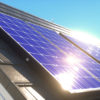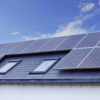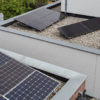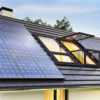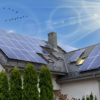At this point, it’s safe to assume that everyone knows the products they buy never do their advertised qualities or quantities any justice. Be it the bag of potato chips which has more air than chips or a car that just won’t touch the mileage its manufacturer claims. We’re used to stuff performing below expectations and don’t mind it either.
Solar panels on the other hand, are usually excluded from such handicaps. Most consumers go into a solar purchase expecting their panels to produce as many watts as their sticker states, at least in the best of conditions.
Unfortunately, solar panels are no different from any other consumer product in this sense. In fact, don’t be surprised at all if you find your panel’s output well below its rated capacity even on the brightest and sunniest of days when they are sparkling clean.
Here’s why this happens.
What Can You Realistically Expect from Your Solar Panels
So, that 300 watt solar panel you’ve been researching probably doesn’t dishout 300 watts of power. But, just what is its realistic upper limit here? The answer depends on a few key factors.
Firstly, a solar panel’s rated output is decided through rigorous laboratory testing. These tests are done in perfect conditions devoid of dust, clouds or any other pollutants with light shining directly on the panels at a perfect 90 degree angle. We’ve covered this in greater detail in our post on solar panel quality.
At first glance, such tests may seem deceptive since ideal conditions are rare, if not impossible. But, the objective of a solar output test is to determine the absolute power a panel can produce, which is an important figure to have.
So, how much of this power can you actually expect to harvest? Solar panels usually achieve only around 80% of their rated peak capacity, but may fall lower. A number of factors contribute to such losses.
What Causes Solar Power System Losses
Losses in usable power start to occur as the light falls on a solar panel. For the purposes of this article, we’re going to ignore power loss due to environmental factors such as clouds, shade, dust, etc and focus on losses that are inherent in a solar power system due to its physical limitations. Here’s a rundown of how it happens at each level:
Mismatch losses
Also known as the “mismatch effect”, power losses here are caused if solar cells in an array have different properties, resulting in inconsistent voltages. Mismatches can result in serious power losses since the entire system defaults to the output of the lowest performing solar cell.
Besides low power output, excess electricity trapped in the solar module’s electric circuit is converted into heat that can further damage the solar modules. Mismatch losses can result in around 2% power loss.
Temperature loss
Solar cells perform best below 25 degrees celsius, which is also what the temperature they are tested against. The catch here is that these figures refer to the temperature of the cells and not that of ambient air surrounding the panels. So, the panels themselves can get much hotter than 25 degrees even if the ambient temperature is a cool and breezy 20 degrees.
A solar panel’s power output can drop drastically as it gets hotter than 25 degrees. Power loss due to heat is measured as “Pmax”, which tells us how much a solar panel’s electricity production drops per degree rise in temperature. For example, if a solar panel’s Pmax is -0.45%, then that’s how much electricity we lose per one degree celsius.
Temperature accounts for the majority of a solar panel’s output losses and can range from 10% to as much as 25% in very hot conditions. Since mean temperature in most Australian cities can reach well over 30 degrees celsius during summer months when we have the most sunlight, the solar panels will also experience the greatest power loss here.
Light-induced degradation (LID)
LID typically occurs during the first few days after a solar installation and causes power loss due to build up of boron-oxygen compounds in the solar cell’s silicon base. Some solar cells are more predisposed towards LID than others. LID accounts for 0.5% to 1.5% of power loss in photovoltaic systems.
P-type monocrystalline solar cells have higher oxygen content and are doped using boron and accept electrons, which makes them more susceptible to LID.
Multicrystalline solar cells are not as efficient as monocrystalline cells, however have less oxygen making them resistant to LID. Similarly, N-type silicon wafers are doped with chemicals that release electrons making them impervious to LID.
Cable and wiring losses
Solar panels are a collection of photovoltaic cells stacked in an array. These arrays feed into a wire that runs from the panel into the inverter. Since no wire is fully efficient, part of the power flowing through it is lost as heat.
For most solar power systems, cable related power degradation accounts for around 2% of the system’s total loss, which can be brought down to 1% by using thicker wires or positioning the system such that it requires shorter wires to reach the inverter.
DC to AC Loss
Solar panels produce DC current that’s unusable by household appliances. A solar inverter then converts that DC power into usable AC electricity which is fed into your home’s electrical circuit and the grid.
Since solar inverters are around 93% – 96% efficient, a portion of DC power being fed into them will be lost as heat. The exact amount of electricity lost will depend on your inverter make, and whether it’s oversized or not.
Oversized inverters (or, inverters that are rated for a higher output than the solar power system’s total output) are more efficient than those that are matched to their panel’s output.
Inverter Clipping
Inverter clipping happens when the DC power input from the panels is greater than its rated capacity. In such a case, the inverter “clips” or derates the overall output to match its own capacity, causing a loss in power.
For more on this, check out our article on choosing the right inverter size.
How Can You Maximize Your Solar Power System’s Output
The reasons for power loss we’ve discussed above are mostly unavoidable, because physics. However, we can also bring down such losses by designing efficient solar power systems.
For example, selecting solar panels with low or no LID potential, using sufficiently thick wires and cables, strategically sizing the inverter to mitigate clipping and positioning the solar panels such that they receive as much direct sunlight as possible can all help increase the system’s output.
At bidmysolar™, we understand the importance of a well thought-out solar power system. Through proper client engagement in an unrushed process and using our Advanced System Design uses market leading and proprietary technologies to minimise the risk of power loss and ensures you get a solar power system that serves you for decades.
Feel free to contact us with any questions you might have, or call us at 300 004 600 for a chat.

